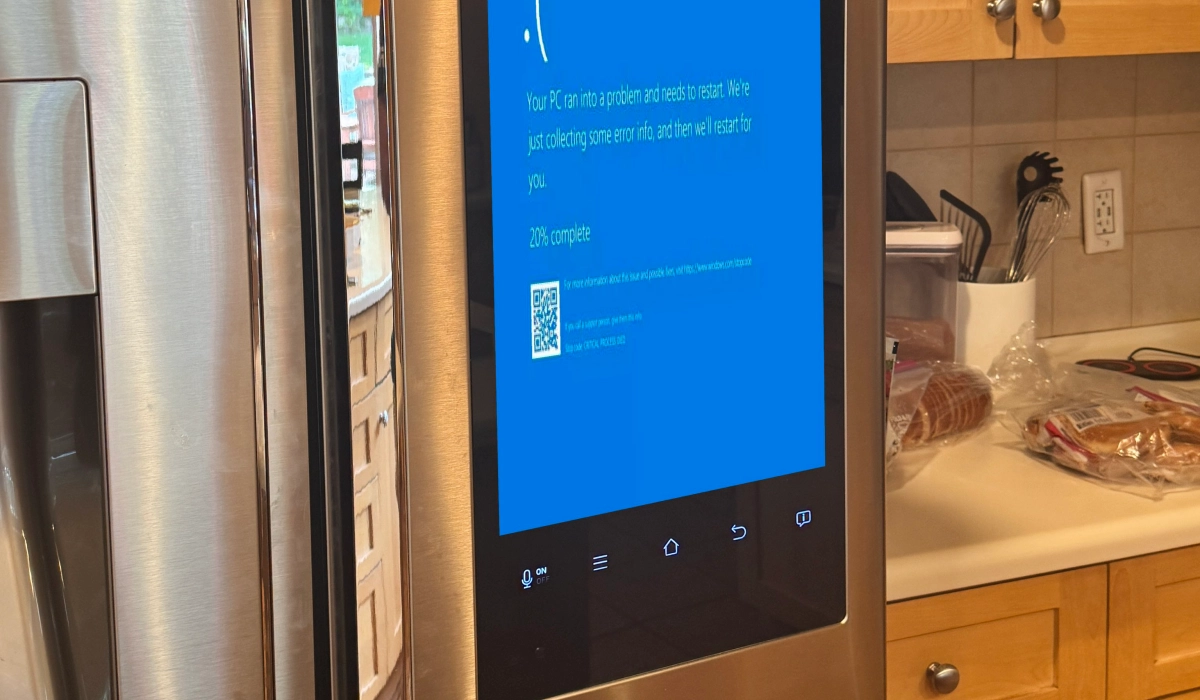On the 19th of July 2024, when the CrowdStrike software bug hit, IT systems around the world suddenly failed, leading to disruptions at offices, stores, airports. train stations, hospitals, and more. Here is what really happened, in layman’s language.

Technology is great and digital technology, especially, has brought us wonderful advancements in the last several years. But, in light of the Internet breakdown of July 19, 2024, you have to ask yourself if your refrigerator or other home appliance really needs to be connected to the Internet. Because, on this great day, when IT systems around the world shut down, it threw the world into near-chaos.
Table of Contents
All around the world, when the CrowdStrike software bug happened, hundreds of thousands of Internet-connected business systems went offline, throwing the world into panic. Naturally, there were initial questions about whether this was the result of a hack job, but the problem was quickly identified as coming from a buggy software.
Introducing CrowdStrike
CrowdStrike is a cybersecurity company that most people in the world are hearing about for the first time, thanks to this global crisis that they were responsible for. What happened was that the company , issued a software update for its flagship security product called Falcon Sensor. This update had a bug that caused any Windows computers with Falcon installed to crash without fully loading. You can imagine the rest of the story; right?
Windows operating system runs on millions of devices all over the world. It is the most widely used operating system outside of cell phones. It is especially prevalent in enterprise or business circles. While it does not directly power cell phones and IoT devices, many systems that those devices depend on for connectivity and processing were affected as well.
Effects of the CrowdStrike software bug
When the CrowdStrike software bug hit IT systems, flights were grounded at airports, train stations basically ground to a halt, and banking systems went silent. Stores experienced the failure of their payment systems and could accept only cash. Broadcasting stations, hospitals, educational institutions, and others, all took a hit. For the hours before the the problem was identified, isolated and fixed, the world of commerce took a massive hit. And no-one should be surprised about that. This kind of outage is an occupational hazard of modern business systems.
No-one ought to be surprised that a singular event like this was capable of taking down IT systems, and causing widespread mayhem, the world over. That risk has always been there, and if it can happen, given enough time, it will happen. And when it did this time, the first outages of this pre-zombie apocalypse happened in Australia and quickly spread to Asia, Europe, the United States, and the rest of the world.
It will not be surprising to hear news that malicious actors took advantage of the outage to inflict further harm to businesses and individuals around the world. Bad people love and thrive in times of chaos.
Does your fridge need to be Internet-connected?
Someone tweeted, in jest, that due to the outage, they could not open their smart fridge. Bants. Jest. The fridge in the tweeted image likely does not run Windows 10 or 11, and so it is very unlikely that the CrowdStrike software bug had any direct impact on it. But then, who knows what the next bug or hack will affect? Perhaps embedded home appliances? Or even electric cars?
The question is, why does your refrigerator or washing machine and other similar consumer electronics need to be connected to the Internet? Why the risk of immediate hunger because of a software bug or some other issue that can take down fridges and other home appliances?
As you may already know, there are multiple possible things that can trigger a shutdown of this kind. This time, it was a software bug; next time, it could be terrorists hacking into a foundational IT system. Or just some college kid messing around with a fancy new hacking software.
Imagine someone living in a smart home that was affected by this outage and they found them-self trapped inside and unable to go out because the doors and windows are all controlled by an Internet-connected system. Perhaps it did happen and I just haven’t gotten wind of the story yet. Or am I blowing this out of proportion?
Severity
Which leads to the question: How severe were the disruptions caused by the CrowdStrike software bug? I will put it at a number 7, on a scale of 1 to 10. The disruptions were massive, severe, and widespread.
Moving Forward
All of the world’s super-computing systems are sitting on multiple technological fault lines, any one of which can give way at any time, whether from a buggy software update, a hack, or some other issue that compromises it. How prepared are we to deal with the worst case scenarios of these possibilities? The CrowdStrike software bug episode is a reminder or an early warning of what is possible. The question is, Will we learn from it and adjust or will we move on and get on with our lives like nothing happened?
